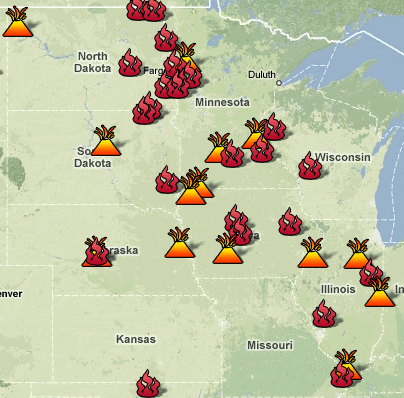From OSHA to the ASSE, the second decade of the 21st century marks a landmark time in human history when it comes to safety procedures revolving around combustible dust. Explosive particulates, ignitable motes and flammable grains have all been responsible for an increasing number of deaths in the US and abroad; this has led several major organizations to begin addressing this problem with renewed zeal and ingenuity.
One such example comes from the American Society of Safety Engineers or ASSE. A recent article posted on farmandranchguide.com discusses a number of safety issues that are being addressed in order to reduce the number of fatalities that happen when grain is shifted from one storage facility to another. In 2010, 51 deaths were reported as a result of carelessness while shifting grains of corn and wheat. Many of these deaths were from the grain itself, which often acts as quicksand in silos – but many were also attributed to the dust and particulates of this grain, which is also extremely flammable when it meets a source of ignition.
Another article by John Astad of Occupational Health and Safety discusses how inadequate current data is on combustible dust. Regarding the 2006 CSB “Combustible Dust Hazard Study”, he points out that after three similar incidents in 2003, the investigation team noted that there was no agency that keeps track of why combustible dust incidents occur or even a record of how many of these incidents have taken place. The article also suggests that the number of these incidents may be much higher than many people expect, and mostly related to ignition, stating:
Combustible dust-related fires occur with alarming regularity throughout the manufacturing, non-manufacturing, and utility sectors. In 2008 following the tragic Imperial Sugar Refinery dust explosion, the Combustible Dust Policy Institute discovered through researching media accounts that more than 80 percent of combustible dust incidents were fires.
To learn more about the ISR incident, click here, and to learn more about the CDPI, click here.
What this all amounts to is an increased awareness of the dangers of working with combustible dust. Industries around the world who deal with incidents of this nature will soon be eager to reduce the number of needless fatalities that occur when ignitable particulates are mishandled.
What do you think about the alarming number of incidents involving combustible dust? Let us know by sounding off in the comments section below!


